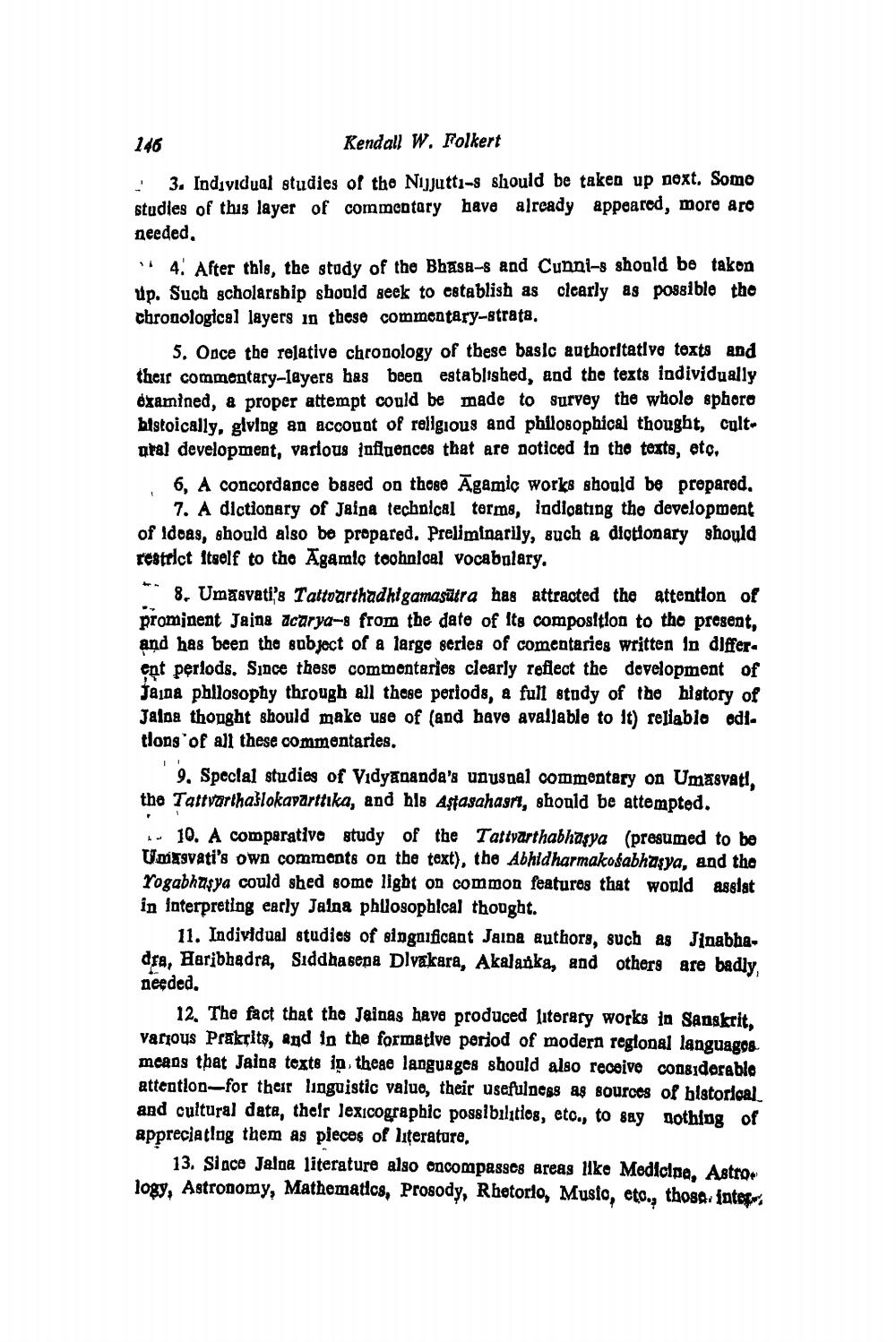________________
146
Kendall W. Folkert
3. Individual studies of the Nijjuttı-s should be taken up noxt. Somo studies of this layer of commentary have already appeared, more are needed,
4. After this, the study of the Bhasa-s and Cunni-s should be takon up. Such scholarship should seek to establish as clearly as possible the chronological layers in these commentary-strata.
5. Once the relative chronology of these basic authoritative texts and their commentary-layers has been established, and the texts individually examined, a proper attempt could be made to survey the whole sphoro histoically, glving an account of religious and philosophical thought, cultaral development, various influences that are noticed in the texts, etc,
6, A concordance based on those Āgamic works should be prepared.
7. A dictionary of Jaina technical terms, indicating the development of ideas, should also be propared. Preliminarily, such a dlotionary should restrict itself to the Agamle toohnloal vocabulary. ** 8. Umaavati's Tattoarthadhigamasutra has attracted the attention of prominent Jaina acarya-g from the date of its composition to the present, and has been the subject of a large series of comentaries written in differ. ent periods. Since these commentaries clearly reflect the development of faida phllosophy through all those periods, a full study of the history of Jalna thought should make use of (and have avaljable to it) reliabio odl tions of all these commentaries.
9. Special studies of Vidyananda's unusnal commentary on Umasvati, the Tattvarthašlokavarttıka, and his Astasahasri, should be attempted.
- 10. A comparative study of the Tattyarthabhagya (presumed to be Umaavati's own commonts on the text), the Abhidharmakosabhasya, and the Yogabhasya could shed some light on common features that would assist in interpreting early Jalna phllosophical thought.
11. Individual studies of singnificant Jaina authors, such as Jinabhadra. Haribhadra, Siddhasepa Divakara, Akalarka, and others are badly, needed.
12. The fact that the Jainas have produced literary works in Sanskrit. various Prakrits, and in the formative period of modern regional languages mcans that Jaing texts in theae languages should also receive considerable attention-for their linguistic value, their usefulness as sources of blstorical and cultural data, their lexicographic possibilitios, etc., to say nothing of appreciating them as pieces of literature,
13. Siace Jalna literature also encompasses areas like Medicine, Astrology, Astronomy, Mathematics, Prosody, Rhetorio, Musio, eto., those integy




